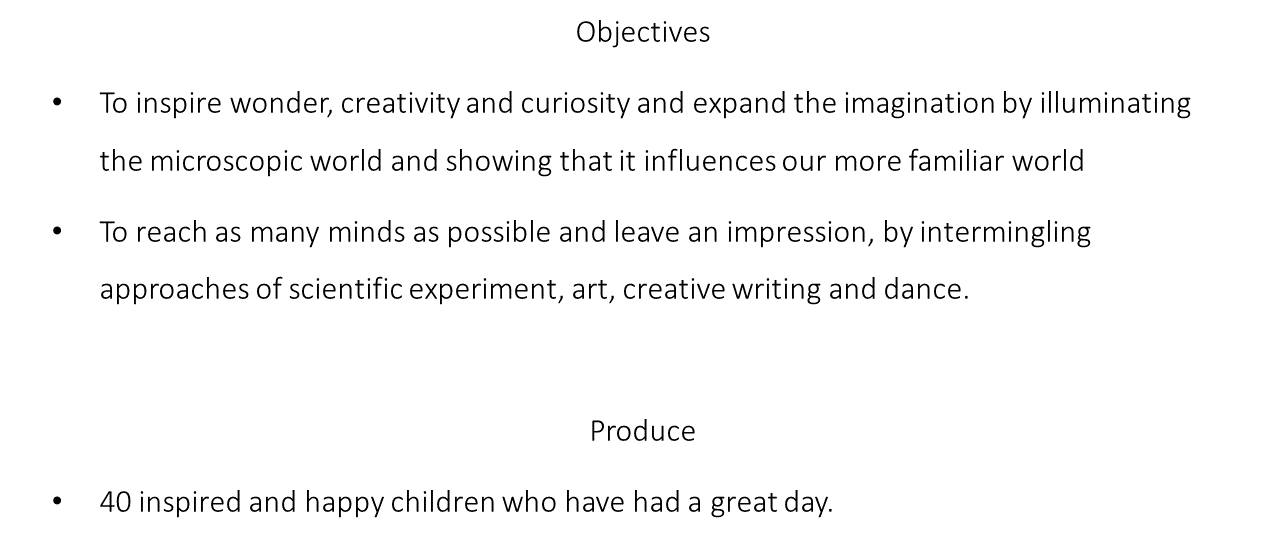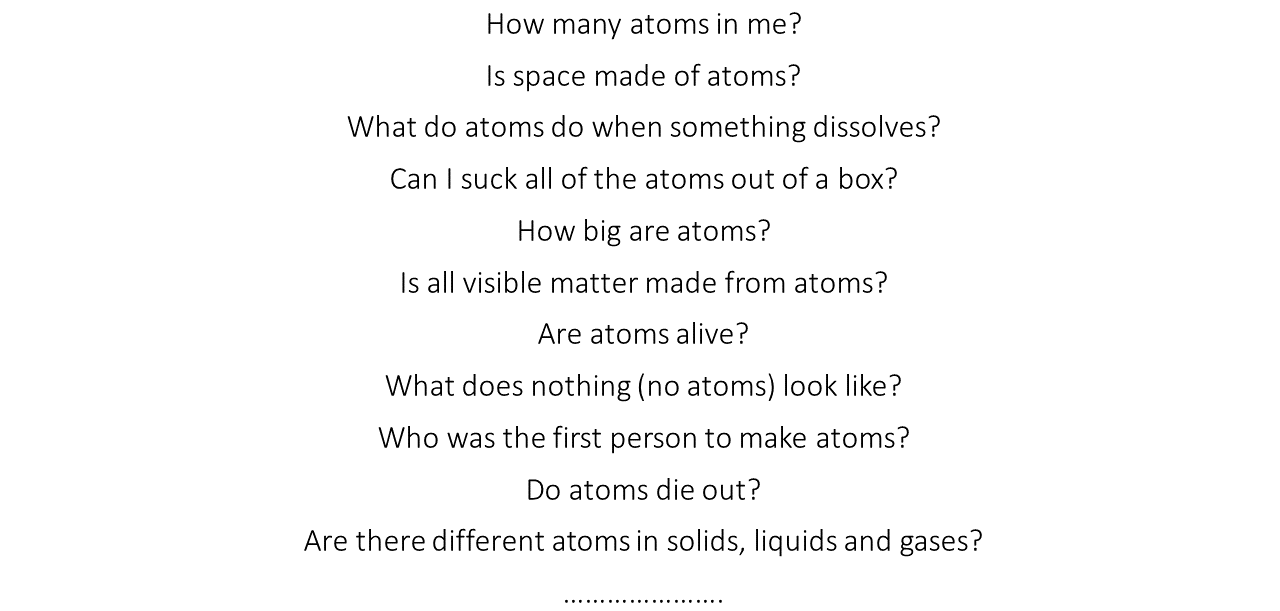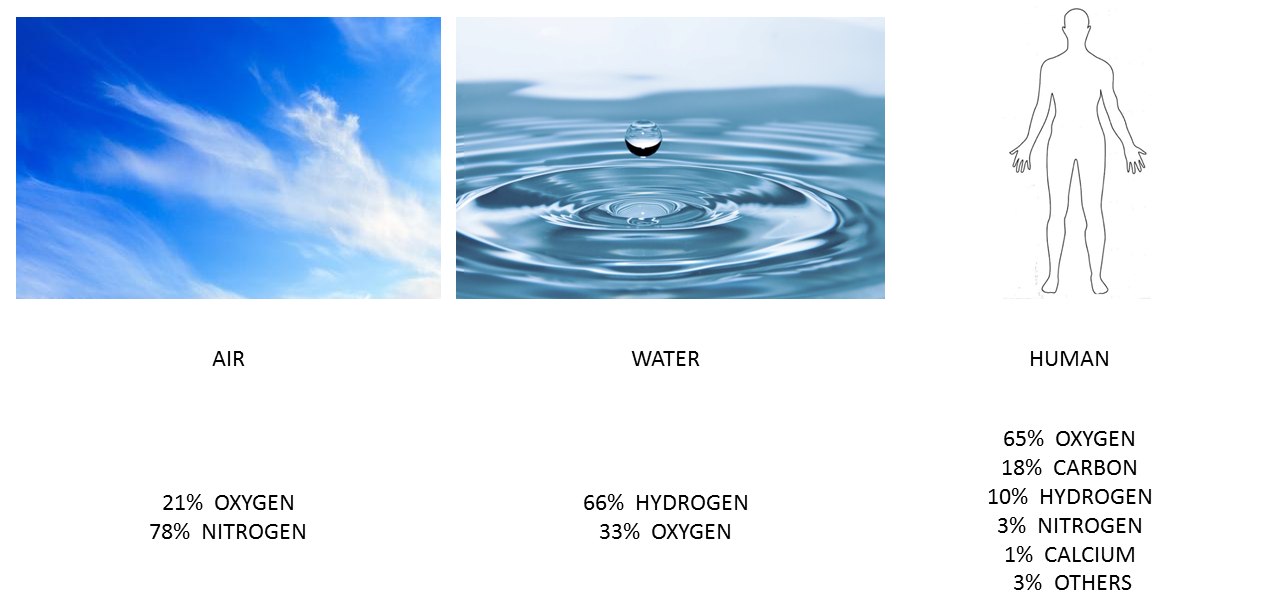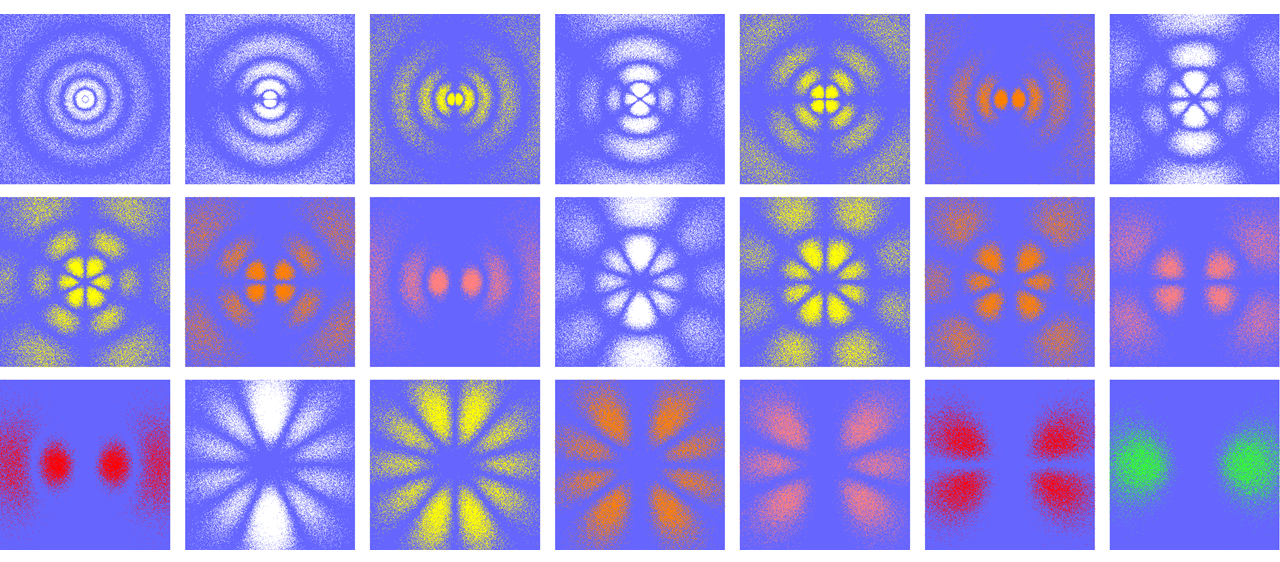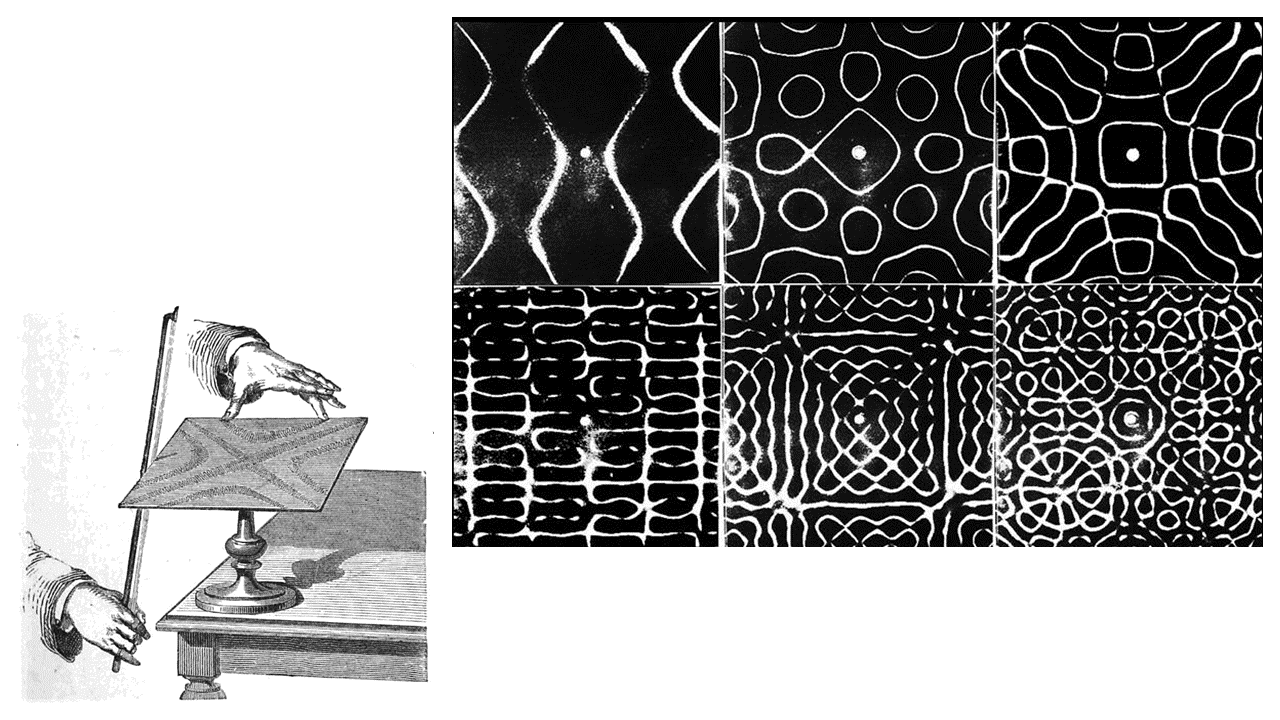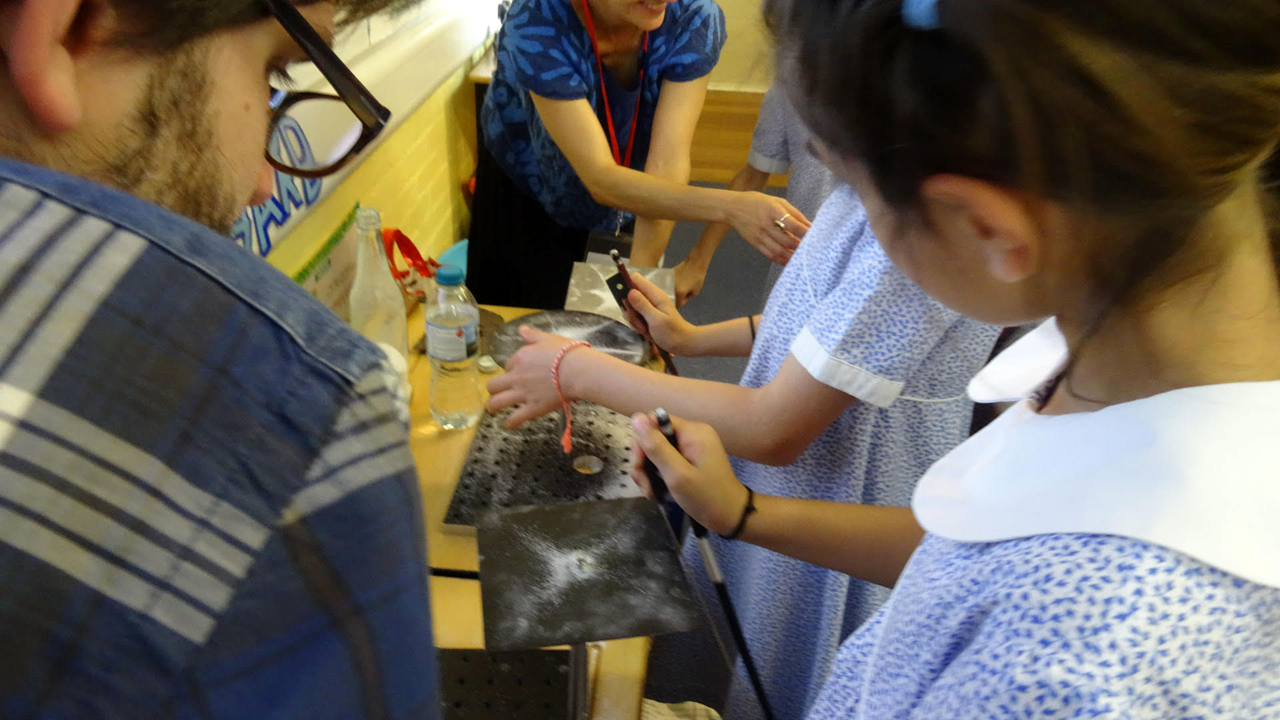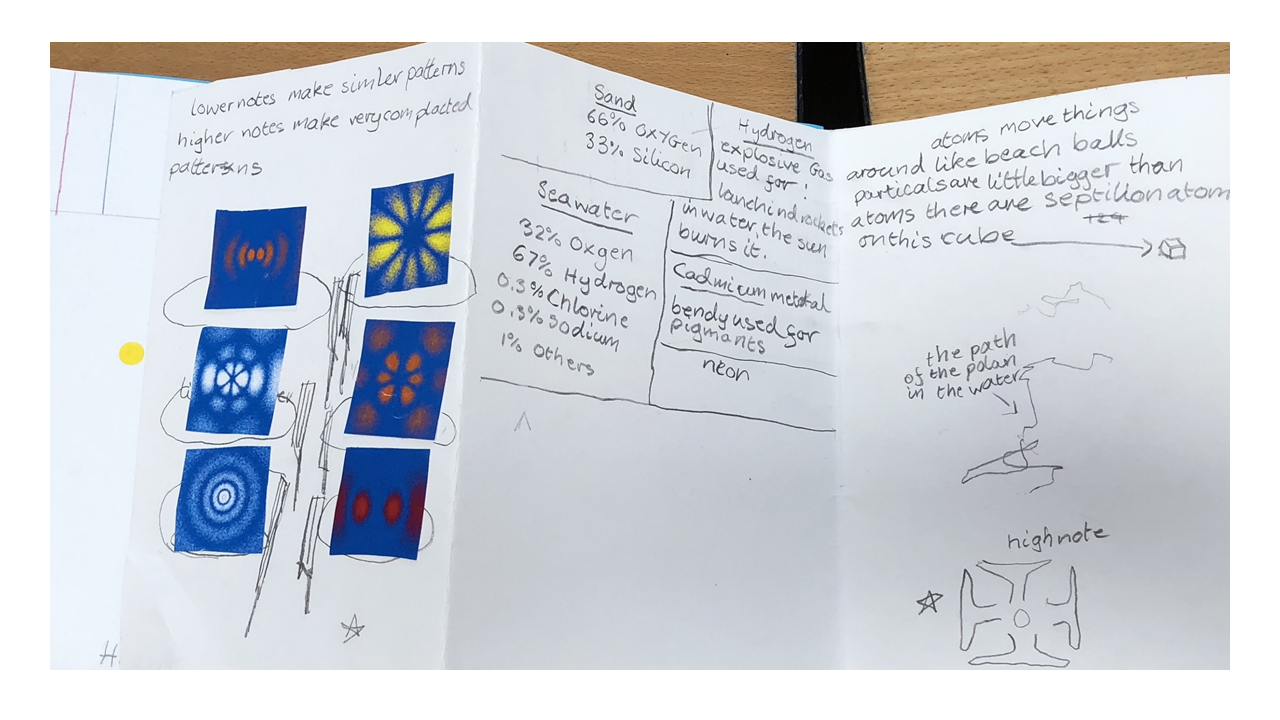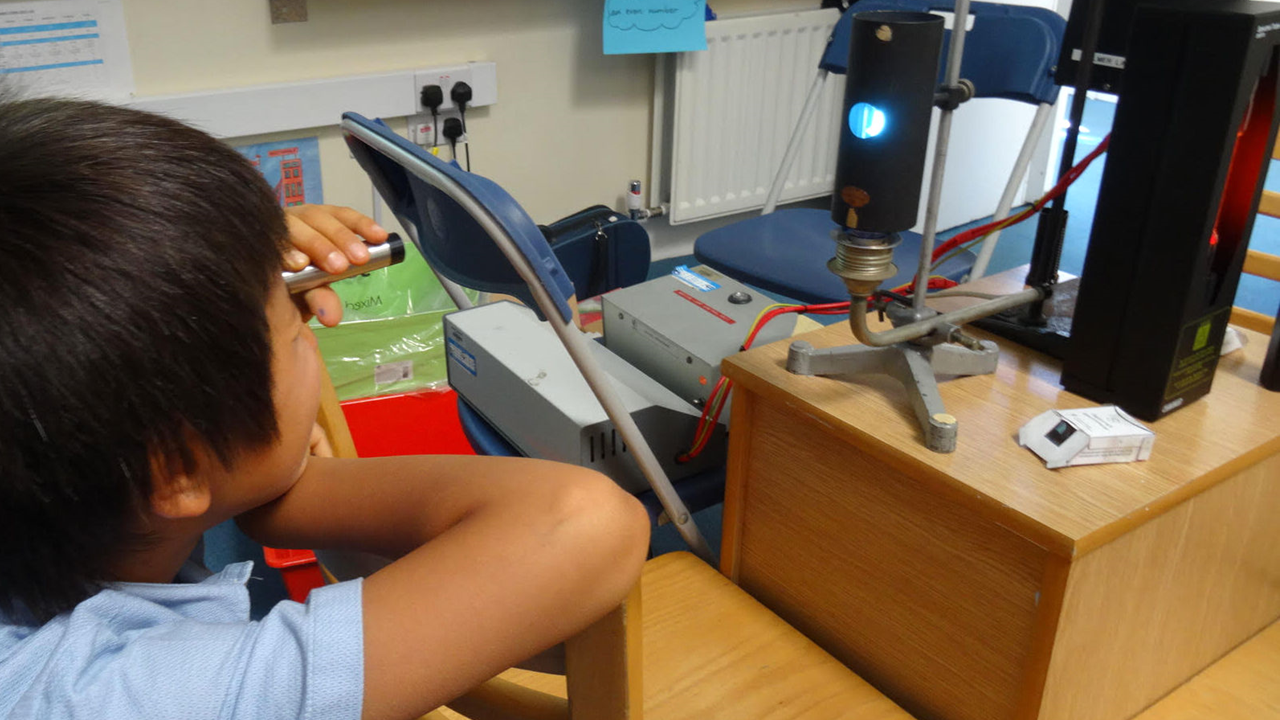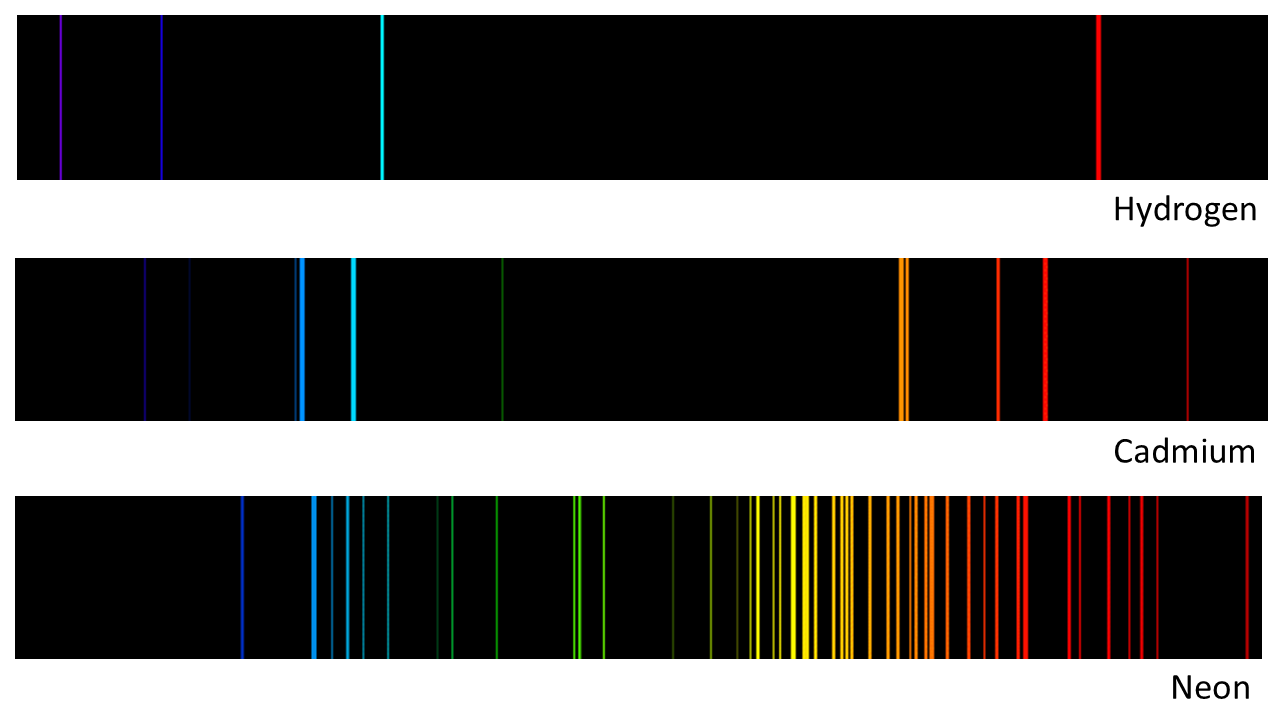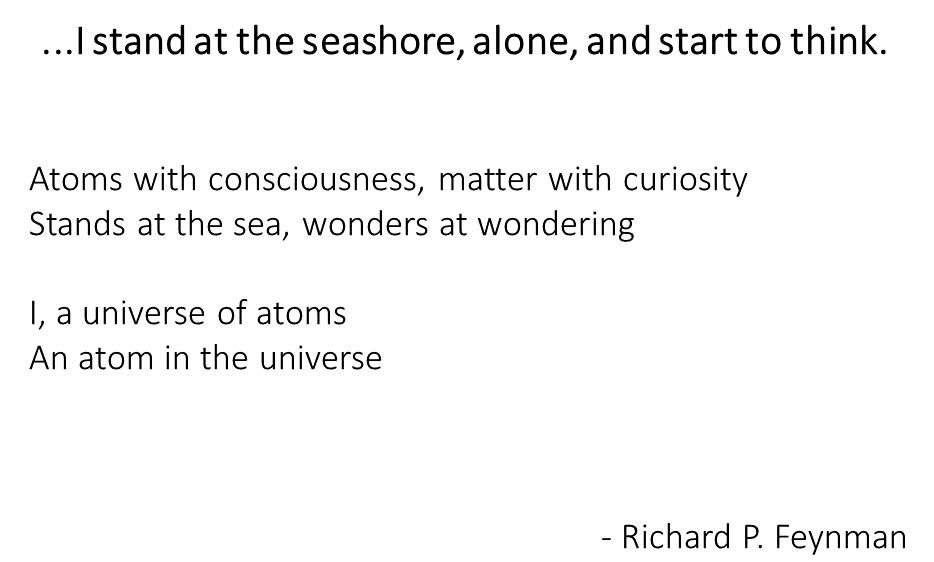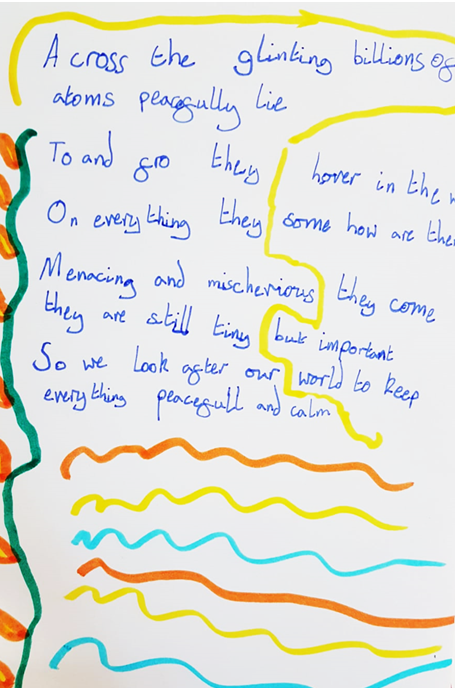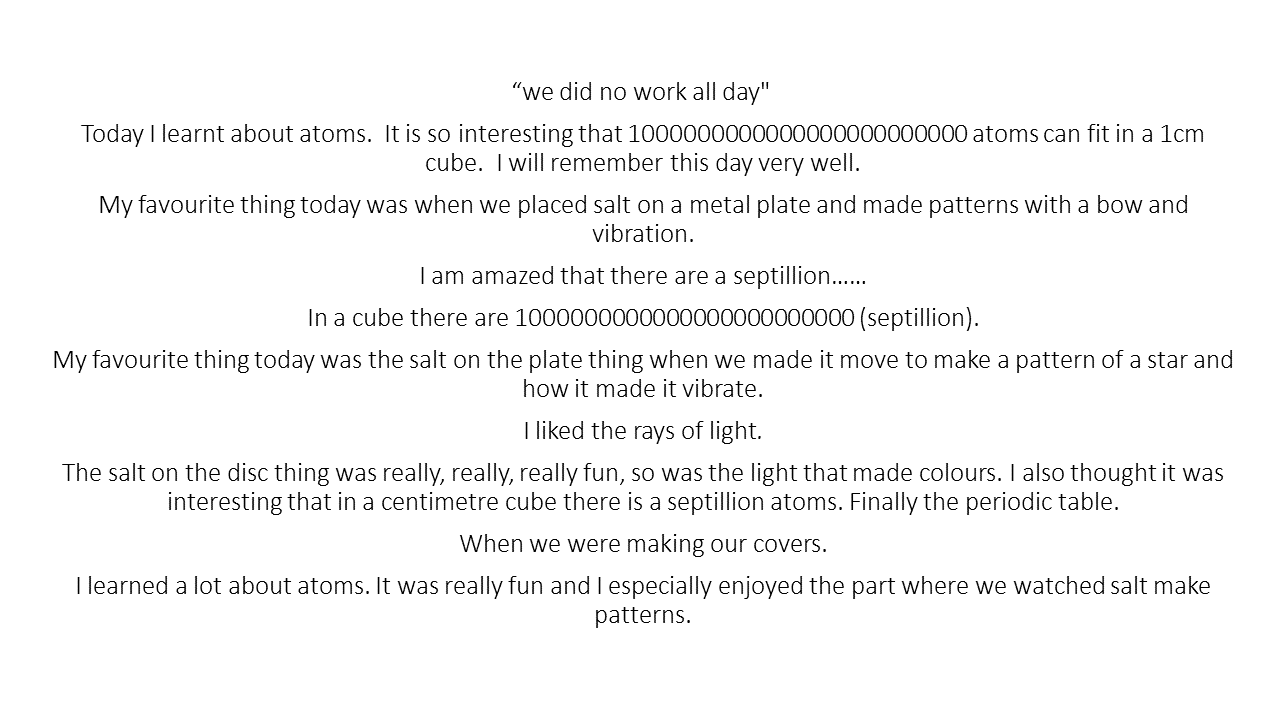'Our World of Atoms' collage.
As part of my work with the QSUM project we have just tested a prototype workshop to introduce 8 to 9 year old children to the beauty of atoms and their intricate interactions with light. These processes colour and shape our world and are at the heart of much of the work of the project. Yet in schools children may only come across these ideas aged 15 to 17 if they do GCSE or A level physics. The junior school syllabus does not tell children about atoms; They learn and thrill about the vastness of our Universe, but are not taught about the worlds within our world that so shape it.
So, we created an experiment. We asked: Can we illuminate the microscopic world for children to inspire wonder, creativity and curiosity and expand the imagination; and can we reach as many minds as possible by using a variety of resonant means - discussion, art, experiment, dance, poetry.
Our product was simple: 40 happy children who have had a brilliant unforgettable time.
Our team are physicists: Kyle Major and Thom Wall from QSUM, Dagny Kimberly and me. Our workshop was launched at the St James School in West London.
Please read on to explore the day through images.
Atom Day, 25th July 2018
At the beginning of the day around half of the children had heard of atoms. After telling children that our world is made of tiny atoms, it is easy to imagine that they might take time to formulate some questions. The reality was quite the opposite and we could not write fast enough to keep up with the flow of curiosity.
A small selection of the children's questions.
Each child was given a simple concertina book. They were told that this was their book to make as interesting, exciting and beautiful as they liked. A basic structure was introduced. There is a small table for 3 elements of our choosing and 3 of theirs. A two page spread marked with a cross for an atom world collage. Six pages will capture the contents and spectra of our six chosen atoms and an additional three pages are for the children to use however they want. Here you can see a completed table, compiled after a group discussion about atoms. an atom collage book cover and a poem…..
The book covers were an exercise to construct a picture by considering the atoms in different materials. We gave the children ingredients lists for various things: the sea, sand, a person, the air, a shell. and we gave them some pots of coloured paper.
They began by making a key and then a picture. This is a beach scene: there is water, sky and a barely visible man running marked out by his mauve carbon atom. It is an interesting exercise for anyone to do. It had me marvelling how such limited ingredients can lead to this incredible world of complexity just by arranging atoms differently.
We arrived with several thousand stickers, so they could stick the correct number of pink protons and yellow electrons for each atom by consulting the periodic table. This launched questions about what a proton is made of, which inspired conversations about quarks and the shape of the electron. Far beyond what we had expected to discuss.
Protons (pink) and electrons (yellow) in selected atoms with sketches of corresponding spectral lines at the top of the page.
Early on we familiarised them with electron vibration patterns. These beautiful images from hydrogen drew a gasp.
There seems to be no better analogy for an atom than a musical instrument. So we introduced the children to Chladni plates. They scattered salt on the surface of these mounted plates and watched the patterns formed by the vibrations.
Because they had seen the electron orbitals, they identified the parallels between the standing wave patterns on the plates and those in the atom; and we went on to show them the connection between the notes played by the plate and atomic spectra.
Here a student has pasted electron orbitals onto sketches of Chladni plates. She has also documented something we took care to explain well: the concepts of large numbers and the remarkable idea that 1 Septillion atoms fit inside 1 cm cubed of metal. An astonishing quantity similar to the number of stars in the visible Universe.
To return to our musical instrument analogy: Each child took a spectroscope to view the light notes of atoms. We had some decent quality scopes and we also experimented with a handmade one, shown on the table in the image. It worked rather beautifully, though was a little trickier to use in the well-lit classroom.
With these pictures as reference, for each lamp the children identified what atoms they were observing. When viewed directly, the cadmium spectrum has a particular moving beauty.
A highlight and perhaps a world first was the afternoon choreography lead by Kyle of a large scale electron orbital dance in the gym. The children transformed between being slow, medium and fast electrons moving between orbitals and Thom, Dagny and I chimed musical instruments to indicate movement to each of the three frequencies.
Extract from talk to the National Academy of Sciences in 1955
The day closed with a reading of a small extract of some words by Richard Feynman reflecting on the Universe of atoms within us and how we are also atoms in the Universe. The children seemed to understand well and embrace this concept. Throughout the day we had Q&A sessions, and an impromptu one right at the end for the girls to explore the life of researchers with Thom and Kyle.
As the week went on, we learn that the books have expanded and traveled. Parents and grannys have been regaled. Many poems have been written which reveal the extent to which the ideas have wholly captured the students' imaginations. The school has made a podcast and the children will lead an assembly to share what they have learnt.
In the feedback from the children we have been struck by their grasp of large numbers, their love of the experiments and creative activities and that they say they “did no work all day”.
With thanks to:
Project team - Dagny Kimberly; Kyle Major and Thom Wall; the QSUM project and funder EPSRC; St James Junior School children and teachers; Dr Helen Mason and the Sun, Space, Art project funded by STFC.
